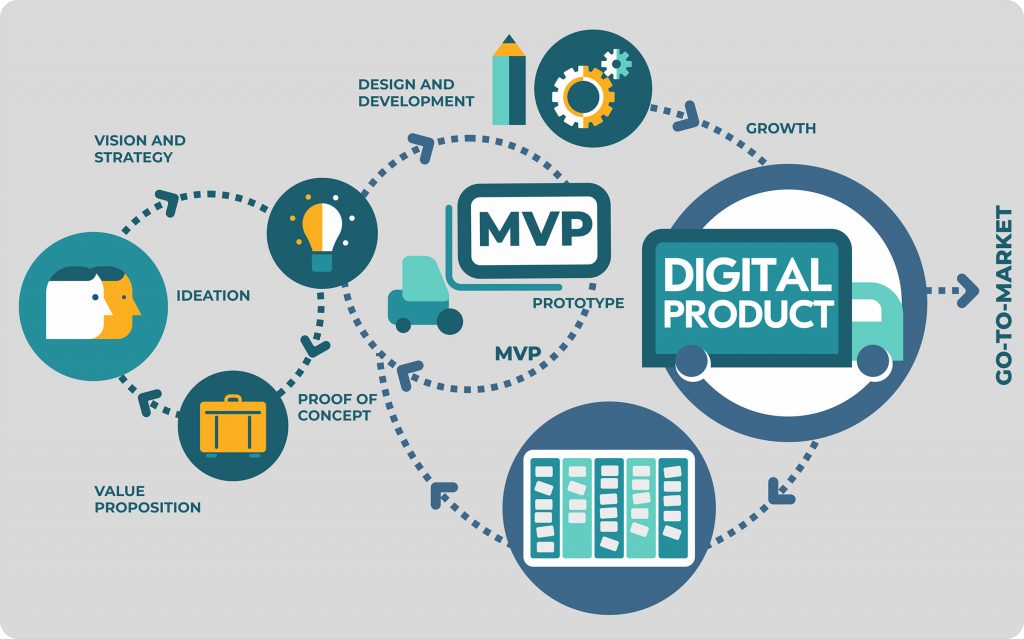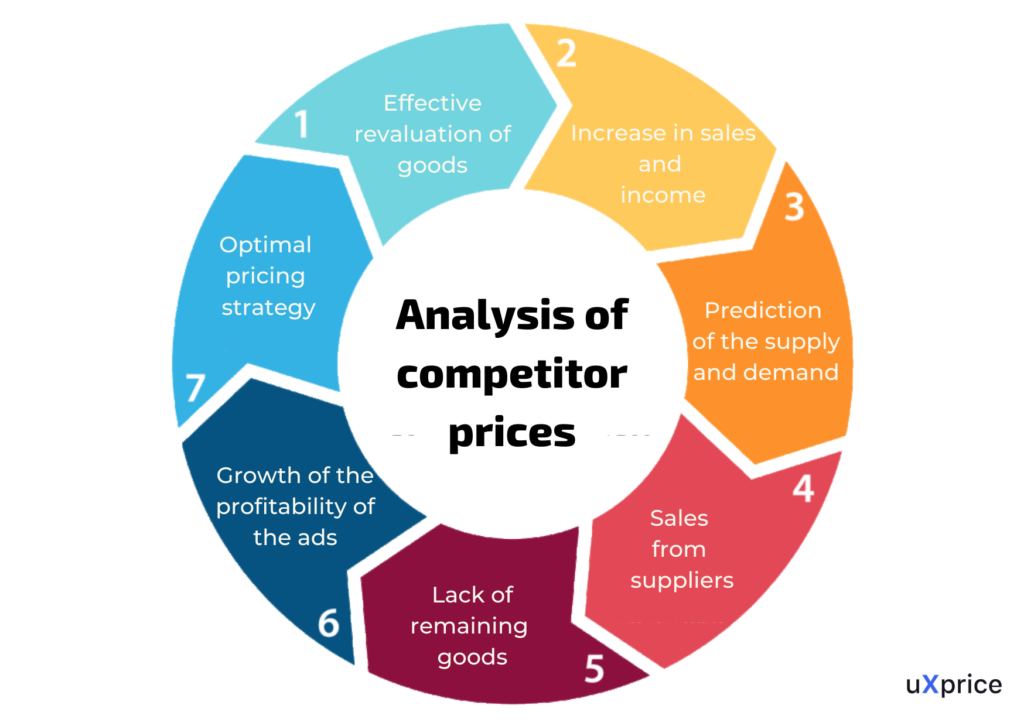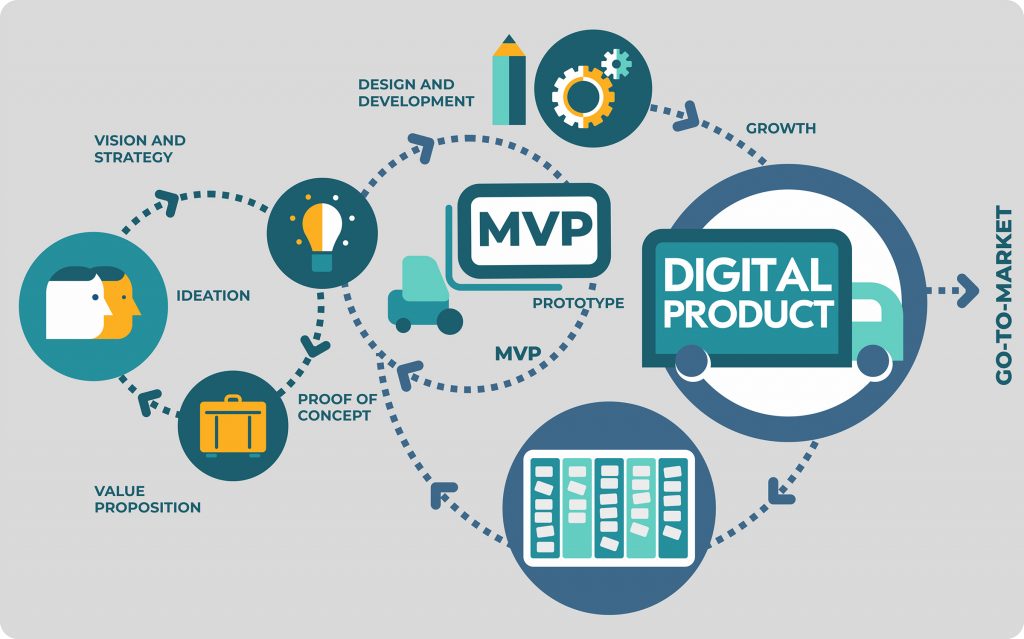The digital economy for today has stretched open a gaping opportunity for entrepreneurs, freelancers, and even hobbyists to create and sell digital products at a profit. The scope in this arena widens, whether you intend to furnish your expertise, solve myriad problems, or create streams of passive income for yourself. But how does one go about creating the first digital product? In this guide, we will take you through each stage-finding an idea to launching- to get you going with a product that your audience will connect with and that will provide value.
Why Create a Digital Product?

Before diving into the steps, it’s important to understand why digital products are so appealing:
- Low Overhead: No physical materials, no manufacturing, and no shipping remain. Digital products can be sold again and again at no additional cost.
- Scalability: If you set yourself up correctly, your digital product can reach the entire planet. Selling 10 or 10,000 copies may not change your costs one bit.
- Flexibility: You can create digital products which best suit your strengths, passion, or niche. Course, e-book, software, anything could work.
Now that you understand the potential, let’s get started with the creation process.
Step 1: Choose the Right Type of Digital Product
Before you start creating, you need to decide what kind of digital product you want to offer. Different products suit different audiences and niches. Here are some of the most popular types:

- E-books: Great for writers, experts, or teachers who want to share knowledge. An e-book can be a comprehensive guide, how-to manual, or a collection of tips.
- Online Courses: These are excellent if you’re an expert in a particular field. You can teach your audience through videos, written content, and quizzes.
- Templates and Tools: If you have design skills, you can create templates (for websites, presentations, social media, etc.) or tools like spreadsheets that help solve specific problems.
- Memberships and Subscriptions: Offering exclusive content or services on a subscription basis ensures recurring revenue.
- Audio & Video Content: From music tracks to tutorial videos or podcasts, this type of content works well for creators who excel at multimedia production.
Your choice should align with your skills, expertise, and what your target audience values the most. If you’re a graphic designer, for example, templates or design tools might be your ideal product. If you’re a financial expert, an e-book or a course may work better.
Step 2: Identify Your Target Audience and Their Pain Points
One of the keys to creating a successful digital product is solving a problem. Your product should address a pain point that your audience is struggling with. The more specific the pain point, the more appealing your solution will be.

Here’s how you can identify these problems:
- Market Research: Browse forums, social media, and communities like Reddit or Quora to find out what people are talking about. What questions do they repeatedly ask? What challenges do they face?
- Surveys and Polls: Use your existing audience (if you have one) by sending out surveys or running polls to gather feedback on what they need help with.
- Competitor Analysis: Look at other digital products in your niche. Read customer reviews to find gaps in their offerings—what are people complaining about? What are their unmet needs?
For example, if you’re a fitness coach, you might discover that many people struggle to find effective workout routines that fit into their busy schedules. You could create a time-efficient, 30-minute workout course or e-book that solves this issue.
Step 3: Outline Your Content and Create a Structure
Once you know the type of product and the problem it will solve, the next step is to outline your content. A well-structured product is easier for your audience to understand and follow.

- E-books: Divide your content into chapters or sections. Start with an introduction, then cover each topic systematically, building up the reader’s knowledge step-by-step.
- Online Courses: Organize your course into modules or lessons. Each lesson should focus on one key concept or skill, with actionable takeaways.
- Templates or Tools: Create a clear outline of what elements or functions the template will include, making it easy to use for the end user.
Make sure your product flows logically from one point to the next, and don’t overload it with too much information at once. Keep things simple and digestible.
Step 4: Choose the Right Tools for Creation
To bring your digital product to life, you need the right tools. Here’s a breakdown of what you’ll need depending on the type of product:

- E-books: Use tools like Microsoft Word, Google Docs, or Scrivener to write your content. For design and formatting, Canva or Adobe InDesign are great choices to create visually appealing e-books.
- Online Courses: Tools like Teachable, Thinkific, or Udemy are ideal for creating and hosting online courses. You can record videos using Zoom, Loom, or even your smartphone, and edit them with software like Camtasia or Adobe Premiere.
- Templates: For graphic templates, Canva, Adobe Illustrator, or Photoshop are excellent for designing. If you’re creating website templates, tools like WordPress or Elementor might be better suited.
- Audio/Video: Record audio with tools like Audacity or GarageBand, and for video, use a camera or smartphone with a tripod and edit using video editing software.
Investing time in choosing the right tools will ensure that your product looks professional and polished, which is key to building trust with your audience.
Step 5: Create Your Digital Product
Now that you have a structure and the tools, it’s time to create your product. Here are some tips for creating a high-quality digital product:

- Focus on Value: Always keep your audience in mind. Every piece of content, whether written, recorded, or designed, should serve a purpose and deliver value. Avoid fluff or filler content.
- Keep it Engaging: If you’re creating a course or video content, use a mix of formats like video, text, and quizzes to keep things interactive. For e-books, break up text with images, bullet points, and infographics.
- Test Your Product: Before you launch, test your product to ensure everything works as intended. If it’s a course, make sure all videos load correctly. If it’s a template, check that all elements function properly.
- Edit and Polish: No matter the type of digital product, make sure it’s error-free and professional-looking. Proofread written content, edit videos carefully, and check for any technical glitches.
Step 6: Price Your Product Competitively
Pricing can make or break your digital product’s success. Here are some factors to consider when determining the price:

- Competitor Pricing: Research how much similar products are selling for. You don’t want to price too high or too low compared to the market.
- Value Proposition: Consider the value your product provides. A comprehensive, in-depth course will command a higher price than a short e-book, for example.
- Audience Budget: Make sure your price aligns with what your target audience can afford. An entrepreneur looking for business templates might be willing to pay more than a casual buyer.
You can also consider offering tiered pricing—e.g., a basic version of your product at a lower price point, with premium versions offering more features or content.
Step 7: Launch and Promote Your Digital Product
Once your product is ready, it’s time to launch. This step involves both putting your product up for sale and promoting it to your audience.

- Create a Sales Page: Your sales page should highlight the benefits of your product, showcase its features, and provide a clear call to action. Include testimonials, reviews, or case studies if possible.
- Use Social Media: Promote your product across platforms like Instagram, Facebook, LinkedIn, or Twitter. Create engaging posts, videos, or stories that build anticipation for your launch.
- Leverage Email Marketing: If you have an email list, send a series of emails leading up to the launch. Highlight how your product solves a problem and offer a limited-time discount to encourage early purchases.
- Collaborate with Influencers or Affiliates: Partner with influencers in your niche or affiliates who can promote your product in exchange for a commission. This helps you reach a wider audience quickly.
Step 8: Analyze and Improve

Once your product is launched, monitor its performance. Use feedback from customers to make improvements and analyze sales data to see what’s working and what’s not. Continuous improvement is key to long-term success in the digital product market.
Conclusion
Creating your first digital product can feel overwhelming, but by breaking it down into manageable steps, you can make the process more approachable and enjoyable. Focus on solving a real problem for your audience, choose the right format, and leverage the right tools to bring your vision to life. With a solid marketing plan, your digital product could become a source of passive income and a valuable asset for your business. Now, it’s time to get started!

